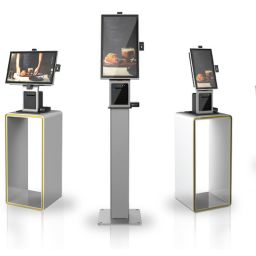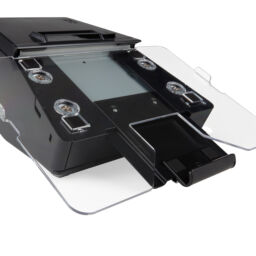By: Chris Fravel
We’re facing a global pandemic. The Coronavirus (COVID-19) has halted modern society in a way that has not been seen since the Swine Flu outbreak of 2009. It’s a scary, but important reminder of just how easily microbials are spread from person to person, both directly and indirectly.
Let’s touch on that quickly. How are microbials spread from one host to another? According to the Council of the Microbiology Society, there are 4 main stages of microbe transmission which include escape from the host or reservoir of infection (where the infection agent normally lives and multiplies); transport to the new host; entry to the new host; escape from the new host. The modes of transmission differ from pathogen to pathogen, but the main routes are listed below:
Animals & Insects – Whether it’s through a bite, sting, or even body-to-body contact, animals and insects are able to transmit certain types of microbes to humans.
Fomites – Inanimate objects such as cloth, plastic, metal, and more can carry disease-causing microbes that are spread when living organisms interact with them, mostly through touch.
Person-to-Person – Perhaps one of the most common forms of transmission, person-to-person can take several forms including airborne, blood or bodily fluid exchange, and touch.
Food & Water – Most microbes need nutrients for growth and often consume the same foods as larger organisms like humans. With access points to our food along the “plough to plate” chain, microbes can wreak havoc on our food and water sources if they are allowed to survive and multiply to the point where the contaminated sustenance reaches our plate.
While all of these modes or routes of transmission are important to keep in mind, the two that we in the self-service kiosk industry want to pay particular attention to are fomites and person-to-person.
The COVID-19 outbreak rocked modern civilization and is raising conversation and debate on how we best reduce the risk of something like this happening again in the future. Many of those conversations are turning their collective attention to the self-service kiosk industry to reduce the amount of person-to-person contact taking place in administrative and transactional processes. At the same time, can we really trust that self-service devices are being properly maintained to reduce the risk of spread through fomite materials? It’s a tricky balance, but there are ways for something like this to be made possible.
A wide array of industries is calling for technology that allows them to keep their frontline employees safe through minimized contact with the public while also having self-service technology that requires minimal cleaning while also minimizing the transmission of pathogens from user-to-user. The industry most particularly interested in this technology is healthcare. Frontline caregivers in the healthcare industry are being exposed to COVID-19 on a daily basis. A large portion of these caregivers is contracting the virus through direct contact with infected patients, while the caregivers who do not contract it are becoming quickly overwhelmed by the sheer volume of both COVID-19 related patients as well as patients that are visiting for other unrelated health matters. The implementation of self-service devices that are equipped to reduce the spread of pathogens would be vital in allowing healthcare facilities to better allocate human resources to more critical tasks while also protecting the patients coming in for care from further pathogen spread.
Kiosk manufacturers are largely turning to antimicrobial screens on their self-service kiosks to reduce the risk of pathogen transmission. Surfaces outfitted with antimicrobial coatings use a chemical agent that inhibits the ability of microorganisms to grow on the surface of a fomite. This is accomplished through several methods ranging from preventing the initial adhesion of a microbe to the surface of the device to including viral or fungal inhibitors that are toxic to microbes that could be potentially harmful to humans.
However, according to an article from Cleaning & Maintenance Management, the Center for Disease Control (CDC) “has found no evidence that suggests” antimicrobial coatings offer any kind of defense against the spread of potentially harmful microbes. The bottom line seems to be that regular cleaning of a publicly used kiosk and washing one’s hands are the best ways to combat transmission of these pathogens.
So, how do we get the best of both safe, self-service kiosk application and minimized person-to-person contact? Why not look to a solution that allows a consumer to interact with a kiosk through their own personal device?
The technology is in its infancy, but is rapidly being developed by leaders in the kiosk system software industry. Allowing consumers to use their personal devices to control a self-service kiosk “remotely” allows for minimized person-to-person contact between employees and customers while also keeping those customers safe when it comes to transmitting pathogens on a shared kiosk.
It can work through a number of different methods, but one of the most popular is through the use of a QR code that can be scanned by the personal device and used to gain control of the kiosk by accessing a website or app that is securely connected to the kiosk software. While this is the most popular, it is also perhaps the most fallible when it comes to preventing direct contact with a shared fomite surface. QR codes can be sloppy in that a device’s camera or an app installed on the device are not able to focus directly on the code, making room for frustration and, in-turn, human error to take place during the interaction.
A more full-proof solution would be to implement RFID technology that could be transmitted from the kiosk system software, through the kiosk, and to the user’s personal device, effectively allowing the user to control the kiosk remotely from their device while within a certain range or timeframe. This would eliminate the potential for frustration caused by QR codes, but provide the same functionality between the user and the kiosk. One downfall of this solution is that not all mobile devices are RFID compatible, so users with older personal devices may not have the ability to use the kiosk without touching it directly.
COVID-19 is reshaping the way we as a society view our daily interactions, both person-to-person and with shared devices and surfaces. We are becoming more concerned with general sanitation and keeping pathogen spread to a minimum as we are currently facing one of the worst pandemics in history. Self-service kiosks are looking to be a frontrunner solution for many industries as long as they can adhere to the sanitation standards being put in place by both corporations and government agencies. It’s up to us to ensure we meet those standards and help flatten the curve of the COVID-19 pandemic as well as any future pathogenic outbreaks we might face.














